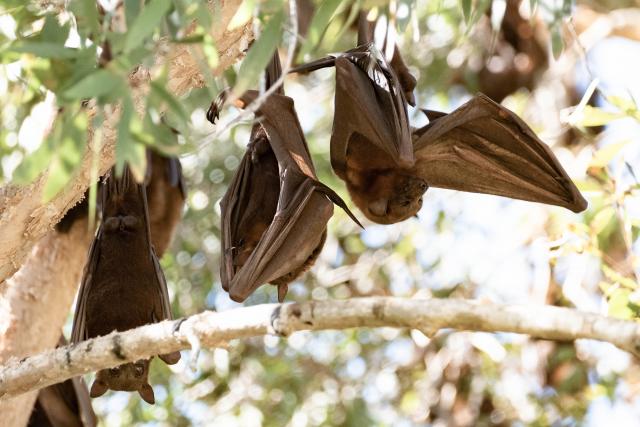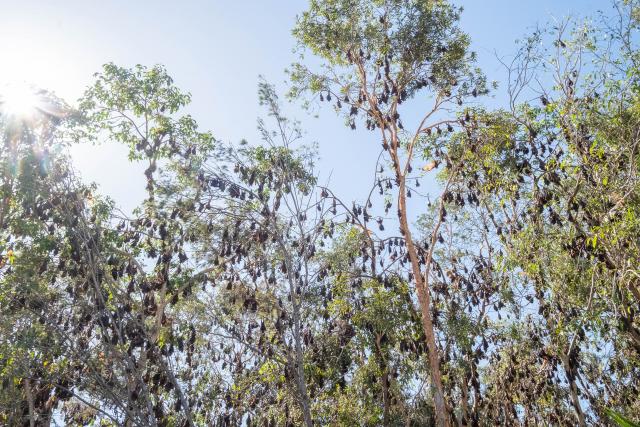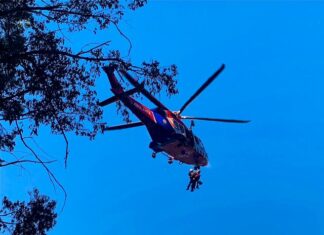Waratah Close, Maple Avenue and Hibiscus Retirement Village residents whose lives have been impacted by a migratory flying fox colony with little relief, were represented at Noosa Council’s ordinary meeting last week by resident Jokubas Kuprevicius who asked two questions on notice.
“We’ve been living with flying foxes at crisis levels for six months. The community is happy for council to do significant work to ensure bats do not come here again next year,“ Mr Kuprevicius told council before asking if council had yet created a management plan for the situation, if so, what it involved and a timeline of its implementation.
The flying fox roost management plans take four months to develop and include consultation with residents and technical experts to identify suitable management options available for the site, council’s environment and sustainable development director Kim Rawlings said in response.
Measures to discourage flying foxes returning to the site may include thinning or removal of vegetation and use of buffering systems, including sprinklers, she said.
Ms Rawlings said council was not able to implement significant measures prior to creating a management plan and was limited by Department of Environment and Science 2020 guidelines and codes of practice set out by the Nature Conservation Act 1992.
Flying-foxes and their roosts are protected under the Queensland Nature Conservation Act 1992 and the Commonwealth Environment Protection and Biodiversity Conservation Act 1999 (EPBC Act).
The Acts prohibit unauthorised disturbance to flying-foxes, or interference with roost habitat.
“The current proposed timeline for the development of the Flying Fox Roost Management Plan is for it to be prepared immediately (subject to appointing a consultant) and to be complete by August. This timeframe includes stakeholder and community consultation on the plan,“ she said.
What we’re hearing is it’s taking time to development plans which leaves us in a situation where nothing tangible has been done and we’ll only get a plan in August, Mr Kuprevicius said.
“Living in these conditions can be brutal,“ the Noosaville resident said.
Mr Kuprevicius told council residents had been provided with a subsidy offered to 100 houses which was not sufficient to cover damages.
He asked if council would redistribute the subsidy to about 10 houses that had been most impacted.
“We’d like to request that the council lodge an investigation to the houses that have been affected the most and allocate relief funds for these houses,“ he said.
“Their expenses are of great significance, and we feel as if the council needs to take care of them.“
Ms Rawlings said council was doing what it could do and the development of a management plan would cost tens of thousands of dollars.
“Little red flying-foxes seasonally migrate to the South East Queensland region, coinciding with the annual blossoming of bloodwoods and other eucalypt species,“ she said.
“Influxes can occur at any location and anywhere within the Noosa Shire. Roosts of little reds can form overnight, often leaving as quickly as they arrive.
“Council assures residents that influxes of little reds are temporary, and residents will experience relief as the weather cools.
“Noosa Council acknowledges the challenges residents are currently facing living near the flying-fox roost in Waratah Reserve.”
She said Noosa Council was one of the only local governments in South East Queensland to offer a Flying-fox Subsidy Program which was intended help eligible residents living adjacent to flying-fox roosts to reduce the impacts associated with roosts on properties and vehicles.
“In addition to the subsidy program, council is investing significant funds into immediate management actions at the site including the trimming of vegetation and immediate development of the management plan. The management plan will make further recommendations for management actions and investment to help manage this issue.“









